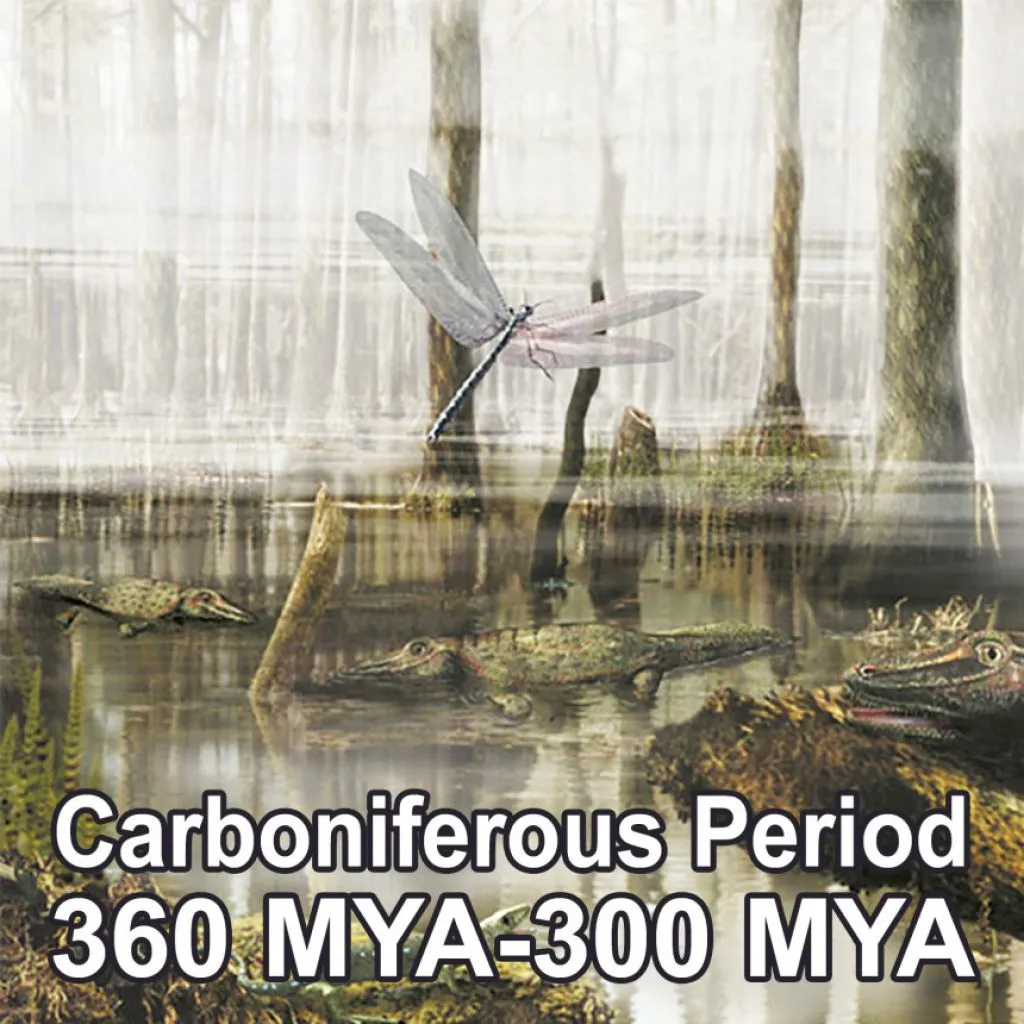
The Carboniferous Period
The Carboniferous is a geologic period and system that spans 60 million years from the end of the Devonian Period 358.9 million years ago (Mya), to the beginning of the Permian Period, 298.9 Mya.
The name Carboniferous means "coal-bearing" and derives from the Latin words carbō ("coal") and ferō ("I bear, I carry"), and was coined by geologists William Conybeare and William Phillips in 1822.
Based on a study of the British rock succession, it was the first of the modern 'system' names to be employed, and reflects the fact that many coal beds were formed globally during that time.
The Carboniferous is often treated in North America as two geological periods, the earlier Mississippian and the later Pennsylvanian. Terrestrial animal life was well established by the Carboniferous period.
Amphibians were the dominant land vertebrates, of which one branch would eventually evolve into amniotes, the first solely terrestrial vertebrates.
Arthropods were also very common, and many (such as Meganeura) were much larger than those of today.
Vast swaths of forest covered the land, which would eventually be laid down and become the coal beds characteristic of the Carboniferous stratigraphy evident today.
The atmospheric content of oxygen also reached its highest levels in geological history during the period, 35% compared with 21% today, allowing terrestrial invertebrates to evolve to great size.
The later half of the period experienced glaciations, low sea level, and mountain building as the continents collided to form Pangaea.
A minor marine and terrestrial extinction event, the Carboniferous rainforest collapse, occurred at the end of the period, caused by climate change.














































